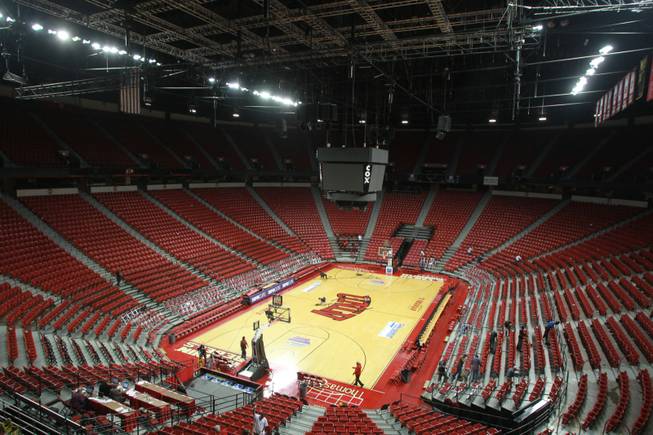
Clean up crews prepare the Thomas & Mack for its hosting of the National Finals Rodeo Dec. 1, 2012.
Thursday, Dec. 6, 2012 | 2 a.m.
A crew of 175 workers has 24 hours to transform the Thomas & Mack Center into a dirt-filled palace for the 2012 Wrangler National Finals Rodeo. This is their day.
-
3 a.m. Sunday
They start with a barren, concrete rink. The wooden floorboards of Jerry Tarkanian Court have been pulled up, the basketball hoops rolled away and a section of seats pushed back, leaving no sign of the basketball game played the night before. Workers cover the pushed-back seats in a clear plastic tarp and add black drapes to the alleyways.
The arena and area around it must be prepared to hold livestock and horses as well as entertain thousands of rodeo fans. The transformation requires precision and efficiency; one missed deadline could throw off the entire operation.
“Everybody has a schedule, and they have to fall in that time frame,” NFR Manager Shawn Davis said. “Everybody has to coordinate and stay on schedule. That’s why you have to have efficient people to keep it all running.”
Davis has been part of the rodeo preparation at the Thomas & Mack Center from the very beginning, when his vote swung the decision to move the NFR from Oklahoma City to Las Vegas. It’s his job to run the operation.
He said the key to the transformation is to have an experienced staff; each person must know what they’re doing.
Davis said he only hires people who understand rodeos in order to maintain efficiency. It costs $4 million to set up the rodeo, and it must be outfitted for livestock and practice sessions.
“Our people are not just from one place; they’re from all over,” Davis said. “If you just go hire new employees, you couldn’t get this done.”
-
6 a.m.
Allen Rheinheimer and his crew have two hours to link 169 metal frames to form a fence around the floor. They also must add chutes, from which the bucking broncs and bulls will be released.
Rheinheimer joined the operation in 2000. For most of the year, he helps set up arenas for horse shows nationwide, but once a year, he takes a break to work the rodeo. He said the process is like building a giant Erector Set.
“I enjoy it because it’s something totally different and unique,” Rheinheimer said. “It’s a nice break — the only down time I have in the horse show industry.”
-
8 a.m.
The perimeter has been set, and two CAT construction trucks are on the arena floor, waiting to spread the dirt.
Darrell Moser, superintendent of Mel Clark Construction, orchestrates the belly-dump trucks filled with 1,200 tons of moist, milk chocolate-brown dirt into the arena. A group of about eight other employees uses shovels to pad the dirt over the rails to make sure everything is covered.
Moser has been part of the process since 1995. He said dirt preparation begins the day before. It’s his job to make sure the dirt has the perfect amount of moisture so the animals have the proper footing.
He said it isn’t difficult to meet deadlines because the crew has been together for so long. Although, a miscommunication during his first year left him shoveling dirt around the arena for 28 hours straight, he said.
“It has to be orchestrated perfectly, but we’ve done it for so long,” Moser said. “If we can’t do one area, we don’t just stop. We do something else.”
-
3:30 p.m.
The concrete floor of the arena is covered in a foot-deep layer of dirt. Outside, roadways around the center are covered in dirt and turf for horses to traverse. Rheinheimer and his crew begin setting up the gates inside the arena and a labyrinth of chutes and pens for the livestock outside.
-
Monday morning
The Thomas & Mack Center has transformed into a rodeo city. The fences are covered in sponsorship signs, special effect lights and speakers have been installed, and the arena is ready for the 10-day rodeo.
Davis said the event grows every year. Overall, he estimates that they use about 2,500 tons of dirt, about 1,500 metal panels and 250 bow gates and frames inside and outside the arena.
Davis said preparation for next year’s rodeo starts as soon as this year’s rodeo begins.
Rheinheimer said he has never seen a crew miss a deadline. Every year, it all moves like clockwork.
“It’s all a well-oiled machine,” Rheinheimer said. “It’s impressive to watch it go from a blank concrete floor into a rodeo.”
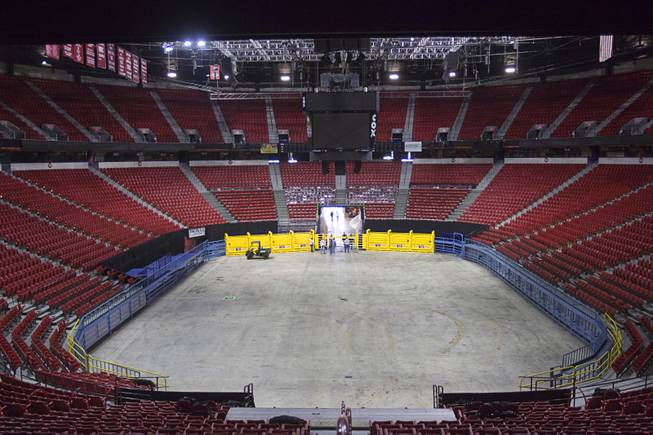
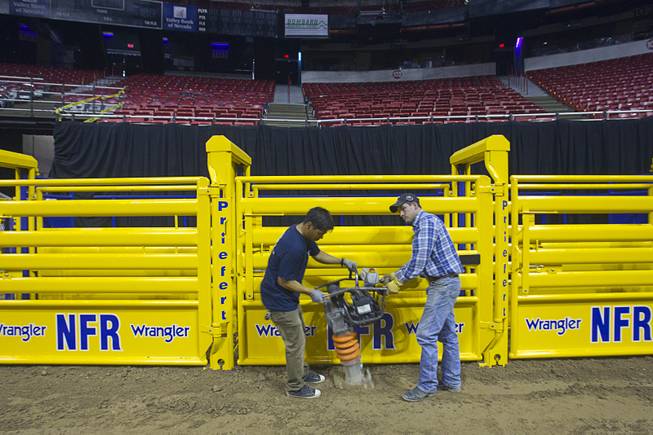

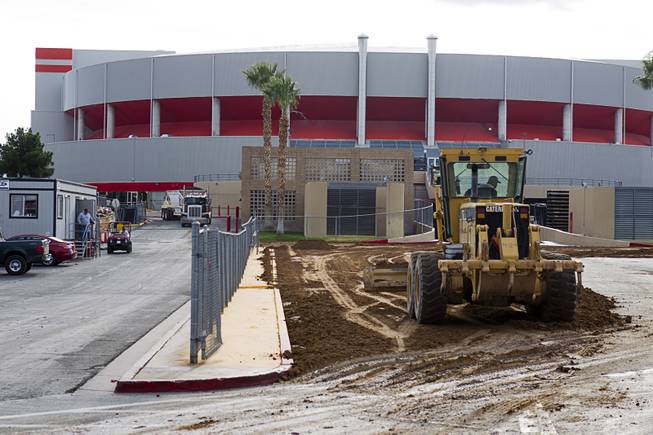
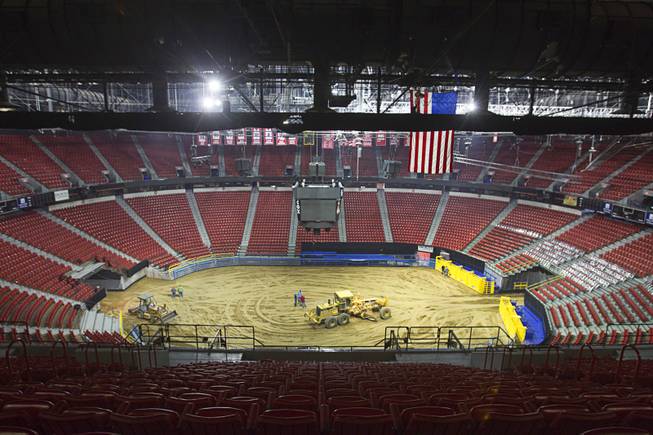

Join the Discussion:
Check this out for a full explanation of our conversion to the LiveFyre commenting system and instructions on how to sign up for an account.
Full comments policy